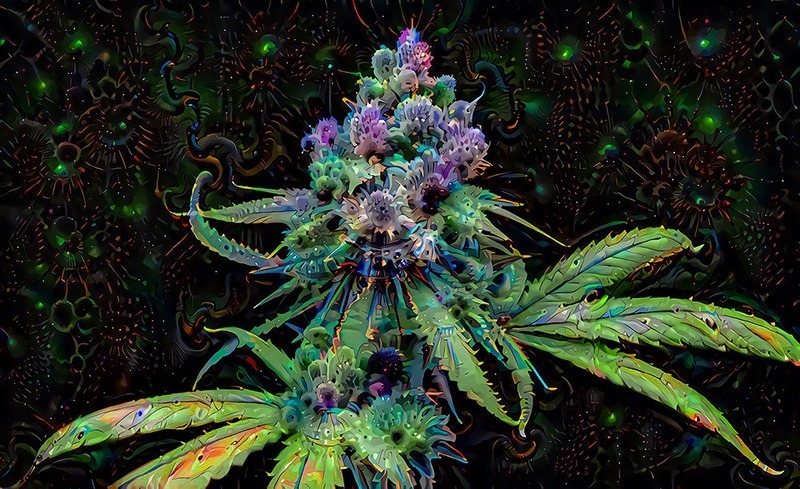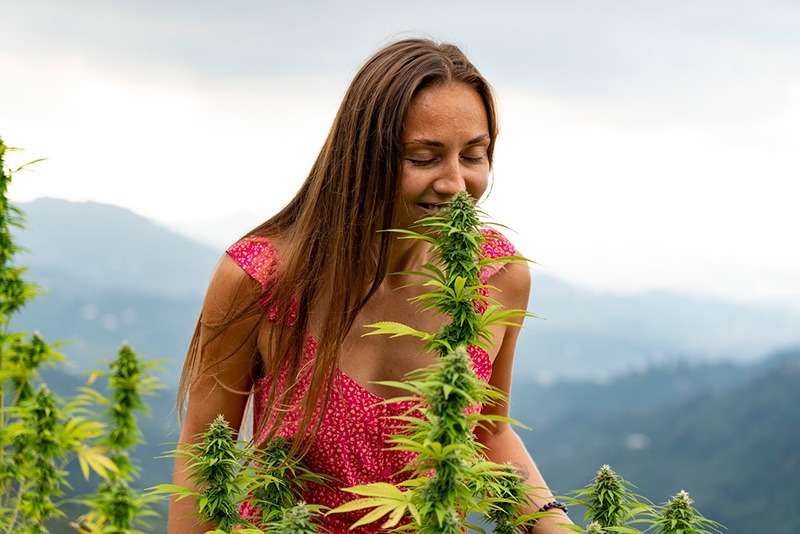Table of Contents
[ez-toc]Pruning cannabis plants is one of the most effective methods for controlling and directing the development of your weed. Pruning can help control your plant’s growth, enhance lateral branching, postpone flowering, and increase yield. Snipping parts of your plant as it develops can seem odd. But, by pruning unwanted growth, you can divert the plant’s energy and resources toward developing high-quality flowers from exotic weed seeds.
The difference between pruning cannabis plants and trimming cannabis plants
Trimming and pruning are easily confused since these procedures require clipping off portions of the plant but for different reasons. Pruning is more about snipping off larger parts of the plant as it grows. It’s also about damage control, such as removing dead or sick leaves or branches. Conversely, trimming is more concerned with improving the plant’s attributes. You’re removing fan and sugar leaves from the main cola and surrounding buds to improve looks and scent. The finer details of this technique are worked out after harvest. Also, trimming allows for a nicer smoking experience.
Pruning Cannabis Plants Techniques
Here are the common techniques used by growers to prune cannabis plants:
Topping
Pruning cannabis plants involves training and shaping the cannabis plant to grow in a certain manner: topping is one strategy that capitalizes on this concept. Cannabis plants naturally develop into the shape of a Christmas tree. There will be one dominating stem at the top of the plant where the primary cola will eventually form. Also, there are several side branches below it. As the name implies, topping is the practice of pruning the tip of the main stem. As a result, when the stem grows again, it will form a V, resulting in two primary colas.
Additionally, this method permits the plant’s bottom half to receive more light and air, promoting more vigorous development. You are recommended to top cannabis plants within the first four weeks of the vegetative period. The plant should have established 3-5 nodes at this time. The roots and stem should also be robust enough to recover from the topping process’s stress.
Fimming
The purpose of fimming, like topping, is to increase yields. And if you do it well, you can end up with not just two but at least four entirely new primary colas. Another distinction is that, although topping results in horizontal, dense growth, fimming allows for higher plants. This approach entails removing around 75% of the plant’s tip. But, just like topping, you’ll know your cannabis plant is ready for fimming when it develops roughly 3-5 nodes. Doing this operation during the mid-vegetative period is critical, as doing it too early or late can shock the plant.
Lollipopping
Small branches form around the lowest sections of the plant and are prone to atrophy. Complete limb removal permits the plant to transfer nourishment into the top stems, leaves, and buds. By growing inside, more air flows into the lowest regions of the plant, reducing the danger of mold. Most crucial, energy and growth hormones are directed higher to your cannabis buds with the best chance of thriving. This is known popularly as the lollipop technique or lollipopping. The plant takes on a lollipop shape, with bushy foliage at the top and narrow, sparse foliage at the bottom.
Defoliation
Defoliation is removing excess fan leaves to expose the lowest section of the plant to more light. It is critical to remember that the proper procedure must be followed to get the intended outcomes. Defoliation is best done later in the growth cycle after you’ve done some topping. Apart from adding light, defoliation improves airflow throughout the plant. This reduces the possibility of mold growth, which can ruin your entire crop in one fell swoop.
Age Restricted but an excellent step by step video
When is the best time to prune cannabis plants?
Pruning is usually done during the vegetative stage before the cannabis plant matures and is ready to blossom. Before pruning, the plant should be well-established in the vegetative phase, reaching roughly 12 inches (30 cm) tall with numerous sets of leaves. Keep pruning to a minimum to create bushy, squat plants.
Pruning during the early stages of vegetative development has minimal influence on blooming. Also, pruning mature plants that are nearing the blooming stage is not advised. Heavy pruning at this stage can cause blooming to be delayed or prevented entirely. Nevertheless, in other situations, gardeners can decide to purposefully postpone flowering, in which case strategic pruning can be beneficial.
What can you do with cannabis trimmings?
You can still utilize your cannabis trimmings unless they’re dead or infected. The fan leaves, in particular, have the potential to be a key element in cannabutter or cannaoil. If you don’t want to go through that extra step, you can convert them to hash or extract them. Another approach is to juice the fan leaves. If you’re looking for recipes, a fast Google search can assist. Also, you can use the fan leaves as a pizza topping. If you don’t want to consume them, you can also make a topical lotion or balm. The procedure is lengthy, but it is completely achievable.
What to know before pruning cannabis plants
If you’re new to gardening, it can take a few tries to learn how to prune cannabis flowers. While there are some general pruning guidelines, the tactics you choose will be determined by your degree of comfort and the individual growth pattern of your strain of choice, such as the RS11 strain.
- To learn how to prune cannabis, start with simple approaches like eliminating obstructive fan leaves and branches in the plant’s bottom and core.
- Begin with just one or two snips during early growth, and monitor your plant’s health closely.
- Let your cannabis plant rest after pruning, and never use shears again if your plants do not appear healthy.
Further Reading:
50 States, So Where is Cannabis Legal in the United States?
Is Growing Cannabis In Ohio Legal?
How Is Good Commercial Cannabis Grown?







